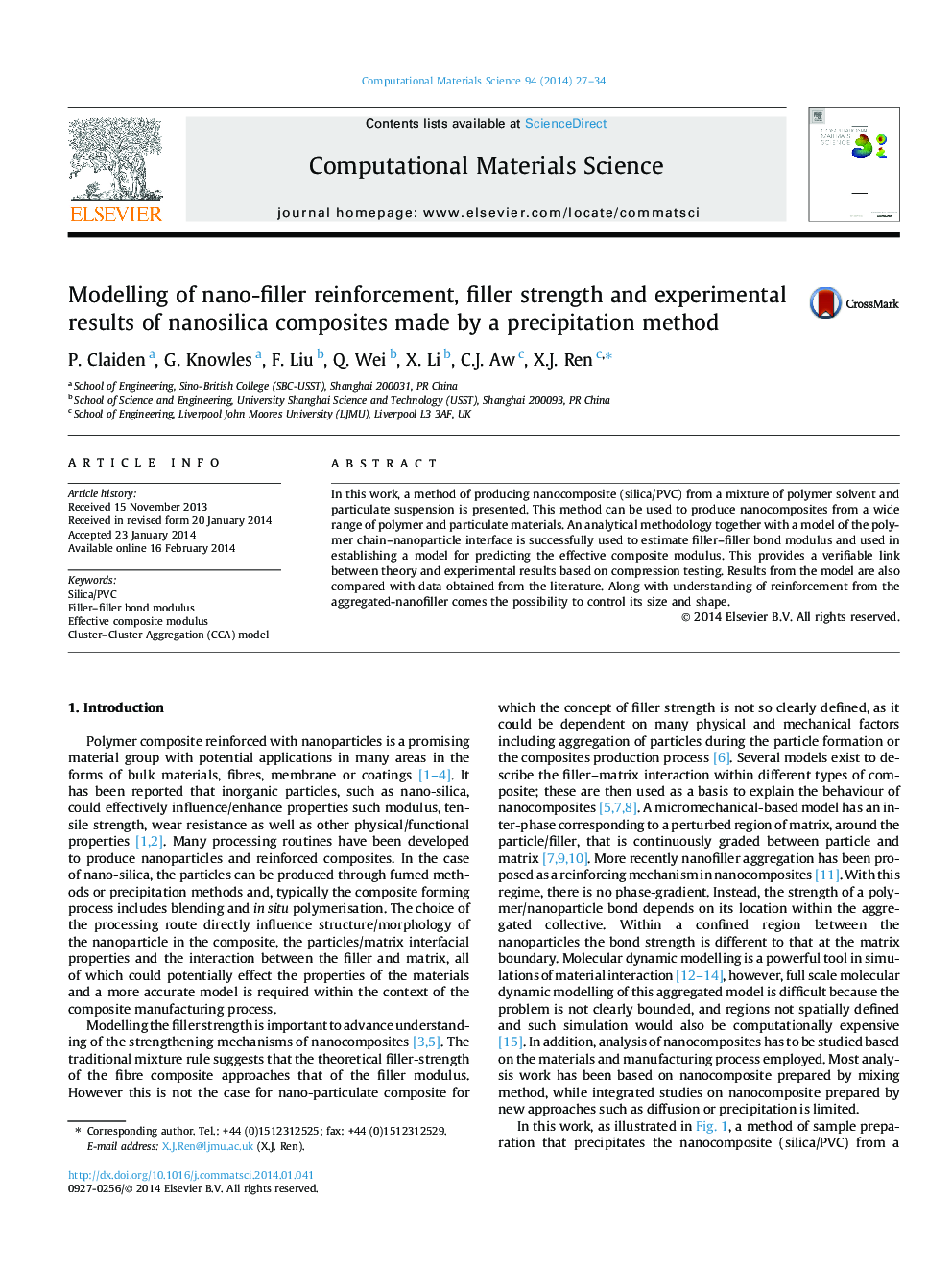| کد مقاله | کد نشریه | سال انتشار | مقاله انگلیسی | نسخه تمام متن |
|---|---|---|---|---|
| 1560784 | 1513915 | 2014 | 8 صفحه PDF | دانلود رایگان |
• Silica/PVC nanocomposite was produced from polymer solvent and particulate suspension.
• Filler–filler bond moduli was calculated based on aggregated-nanofiller model.
• A new approach for estimating the effective modulus of nanocomposite was proposed.
In this work, a method of producing nanocomposite (silica/PVC) from a mixture of polymer solvent and particulate suspension is presented. This method can be used to produce nanocomposites from a wide range of polymer and particulate materials. An analytical methodology together with a model of the polymer chain–nanoparticle interface is successfully used to estimate filler–filler bond modulus and used in establishing a model for predicting the effective composite modulus. This provides a verifiable link between theory and experimental results based on compression testing. Results from the model are also compared with data obtained from the literature. Along with understanding of reinforcement from the aggregated-nanofiller comes the possibility to control its size and shape.
Journal: Computational Materials Science - Volume 94, November 2014, Pages 27–34
